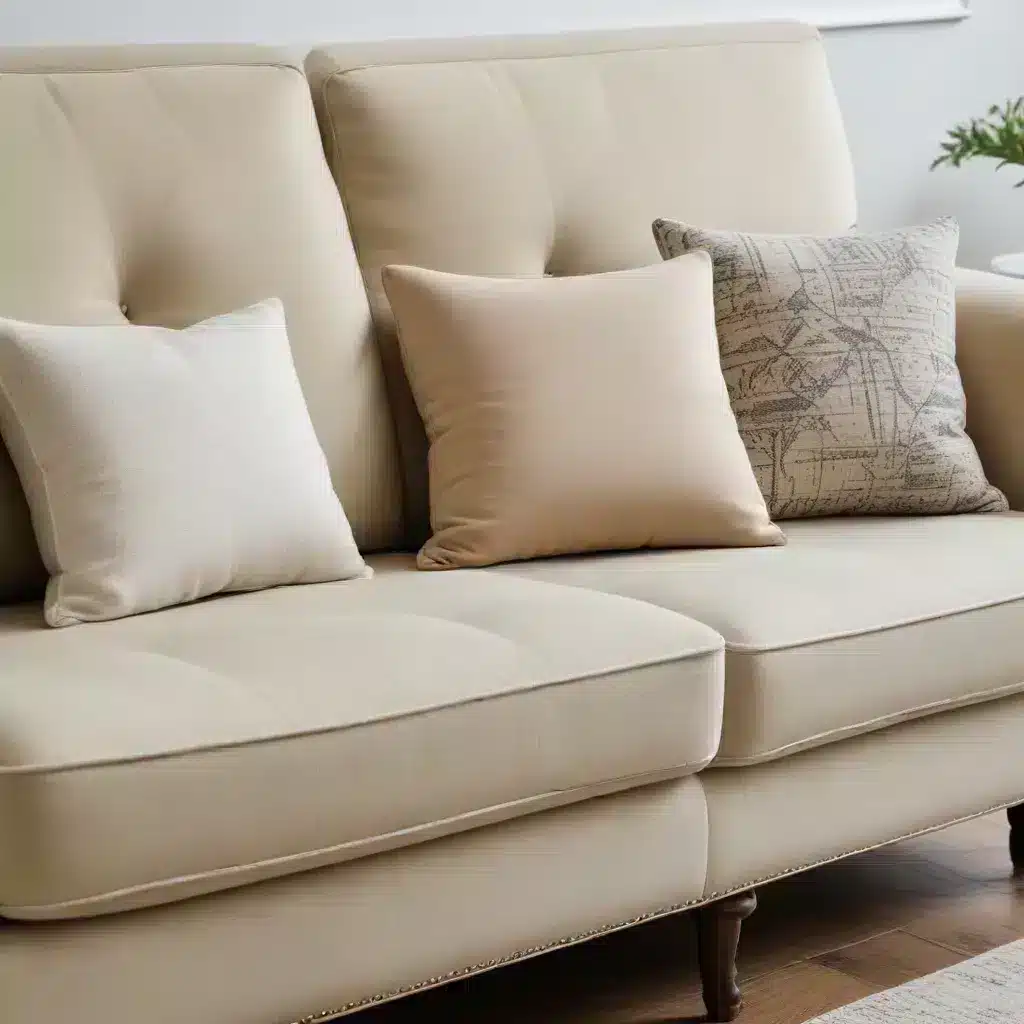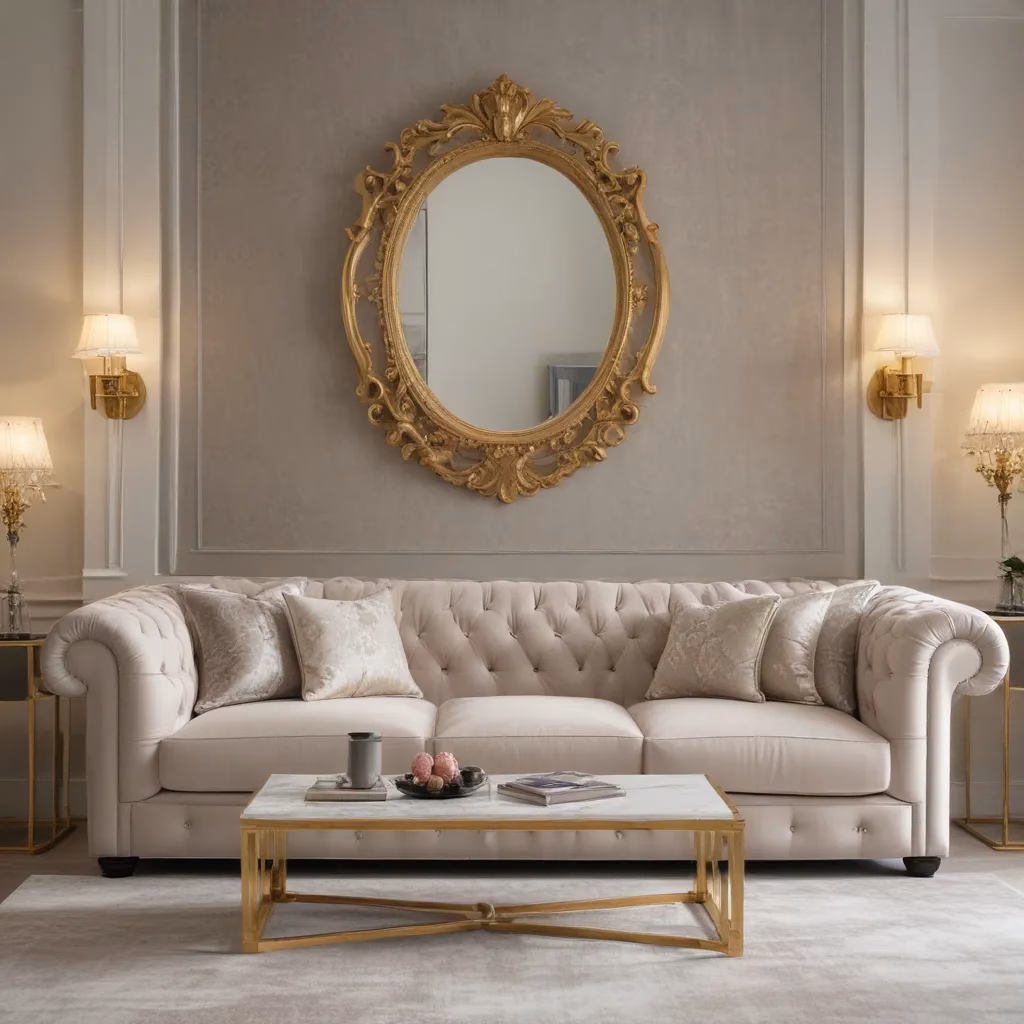
The Heart of Your Living Room
As a furniture specialist with years of experience, I’ve seen firsthand how a well-maintained sofa can transform a living space. The sofa is often the centerpiece of a room, the place where families gather, friends chat, and memories are made. But with all that use comes wear and tear. How can you keep your upholstered sofa looking its best for years to come?
Over time, I’ve learned that proper care isn’t just about maintaining appearances—it’s about preserving the comfort and functionality of your furniture. A well-cared-for sofa can last for decades, becoming a cherished part of your home’s story.
In my years working with furniture, I’ve encountered every type of stain, wear pattern, and structural issue you can imagine. From red wine spills to cat scratches, I’ve seen it all. And I’ve developed techniques to address these challenges, keeping sofas looking fresh and inviting long past their expected lifespan.
Understanding Your Upholstery
Before we dive into care techniques, it’s crucial to understand what we’re working with. Upholstery fabrics come in a wide variety, each with its own characteristics and care requirements. In my experience, knowing your fabric is half the battle in proper maintenance.
Natural Fibers
Natural fibers like cotton, linen, and wool are popular choices for their breathability and comfort. They feel great against the skin and often age beautifully, developing a pleasing patina over time. However, they can be more susceptible to staining and may require more frequent cleaning.
I once worked with a client who had a beautiful linen sofa. She loved its natural texture but was dismayed by how quickly it showed dirt. We developed a regular vacuuming schedule and taught her how to spot clean effectively, which made a world of difference.
Synthetic Fabrics
On the other hand, synthetic fabrics like polyester, nylon, and acrylic are often more resistant to staining and wear. They’re a great choice for high-traffic areas or homes with children and pets. These fabrics are generally easier to clean and maintain, but they may not have the same luxurious feel as natural fibers.
I remember helping a young family choose a sofa. With two small children and a dog, they needed something durable. We opted for a high-quality polyester blend that could stand up to spills and paw prints while still looking stylish.
Leather
Leather is in a class of its own. It’s durable, ages well, and can be relatively easy to maintain if you know what you’re doing. However, it requires specific care to prevent cracking and maintain its supple texture.
One of my favorite projects involved restoring a vintage leather Chesterfield sofa. The leather had dried out over the years, but with the right conditioning treatments, we brought it back to life. The result was a piece that looked even better than when it was new, with a rich patina that only time can create.
Daily Care Routines
Now that we understand our materials, let’s talk about daily care. These simple habits can make a huge difference in the longevity of your sofa.
Regular Vacuuming
I cannot stress enough the importance of regular vacuuming. It’s the simplest yet most effective way to prevent dirt and dust from settling into the fibers of your upholstery. I recommend vacuuming your sofa at least once a week, using the upholstery attachment.
For best results, remove the cushions and vacuum all surfaces, including the back and sides of the sofa. Don’t forget to get into the crevices where crumbs and dust love to hide. I’ve seen sofas transform just from consistent vacuuming—it’s like giving your furniture a mini facelift every week.
Fluffing and Rotating Cushions
Another simple but effective technique is regularly fluffing and rotating your cushions. This helps maintain their shape and ensures even wear. I suggest doing this weekly, or at least every time you vacuum.
For sofas with reversible cushions, flip them over every few months. This can double the life of your cushions by distributing the wear evenly. I once had a client whose sofa cushions were looking flat and worn. We started a rotation schedule, and within a few months, the difference was remarkable.
Addressing Spills Immediately
Accidents happen, and when they do, speed is of the essence. The quicker you address a spill, the less likely it is to set and become a permanent stain. Always blot, never rub, as rubbing can push the stain deeper into the fibers.
I keep a spill kit handy in my home, and I recommend my clients do the same. A clean white cloth, a gentle detergent solution, and water are usually all you need for most spills. For tougher stains, it’s best to consult a professional or use a cleaner specifically designed for your upholstery type.
Seasonal Deep Cleaning
While daily care is crucial, your sofa will also benefit from periodic deep cleaning. I recommend a thorough clean at least twice a year, or more frequently for heavily used sofas.
Professional Cleaning
There’s a lot to be said for professional cleaning services. They have access to specialized equipment and cleaning solutions that can tackle deep-set dirt and stains. Plus, they’re trained to handle different types of fabrics safely.
I’ve seen professional cleaning breathe new life into sofas that owners were ready to replace. It’s amazing what a difference it can make, not just in appearance but in the overall freshness of your living space.
DIY Deep Cleaning
If you’re the hands-on type, you can tackle deep cleaning yourself. However, it’s crucial to use the right techniques and products for your specific upholstery. Always test any cleaning solution on a hidden area first to ensure it won’t damage or discolor the fabric.
For fabric upholstery, a steam cleaner can be a great investment. It deep cleans without the need for harsh chemicals. I’ve had great success using a steam cleaner on my own sofa, and it’s become a twice-yearly ritual that keeps my furniture looking and smelling fresh.
For leather, a gentle cleaner followed by a conditioner can work wonders. Be sure to use products specifically designed for leather furniture to avoid damaging the material.
Protecting Your Investment
Prevention is always better than cure. There are several ways you can protect your sofa from damage and extend its life.
Using Throws and Slipcovers
Throws and slipcovers are not just decorative—they can also protect your sofa from daily wear and tear. I often recommend using throws on the areas that see the most use, like armrests and seat cushions.
Slipcovers are a great option if you want to completely change the look of your sofa or protect it during periods of heavy use. I once worked with a client who used slipcovers seasonally—a light, breathable fabric for summer and a cozy, warm fabric for winter. It was a creative way to change the room’s feel while protecting the sofa underneath.
Fabric Protection Treatments
Many furniture stores offer fabric protection treatments when you purchase a new sofa. These can be effective in repelling stains and making cleanup easier. However, they’re not a miracle solution and will need to be reapplied periodically.
If you choose to apply a fabric protector yourself, be sure to follow the manufacturer’s instructions carefully. Over-application can lead to a buildup that actually attracts dirt rather than repelling it.
Mindful Use
Sometimes, the best protection is simply being mindful of how we use our furniture. Avoid eating messy foods on the sofa, keep pets off if possible, and be careful with items that could snag or tear the fabric.
I remember a client who was distraught about a tear in her new sofa. It turned out her cat had been using it as a scratching post. We repaired the damage and found a solution that kept both the sofa and the cat happy—a scratching post placed strategically near the sofa.
Addressing Common Issues
Even with the best care, sofas can develop issues over time. Here are some common problems I’ve encountered and how to address them.
Sagging Cushions
Sagging cushions are a common complaint, especially in older sofas. Often, this is due to the foam breaking down over time. In many cases, replacing the foam can give your sofa a new lease on life.
I once worked on a sofa that the owners thought was beyond saving. The cushions were so flat you could barely tell they were there. We replaced the foam and added a layer of dacron wrap for extra comfort. The transformation was incredible—it looked and felt like a brand new sofa.
Faded Fabric
Sunlight is the enemy of upholstery fabric. Over time, it can cause fading and weakening of the fibers. If possible, position your sofa away from direct sunlight. If that’s not an option, consider using window treatments to filter the light.
For fabrics that have already faded, professional re-dyeing can sometimes restore the color. However, this is a job best left to experts. I’ve seen DIY dye jobs go terribly wrong, resulting in blotchy, uneven color.
Squeaky Springs
A squeaky sofa can be incredibly annoying. Often, this is due to the springs rubbing against the frame or each other. In many cases, a bit of lubricant applied to the springs can solve the problem.
However, if the squeaking persists or is accompanied by sagging, it may indicate that the springs need to be repaired or replaced. This is a job best left to professionals, as it involves working with the internal structure of the sofa.
When to Consider Reupholstering
Sometimes, despite our best efforts, a sofa reaches a point where simple repairs aren’t enough. This is when reupholstering might be the best option.
Reupholstering involves completely replacing the fabric and often the padding of a sofa. It’s a significant investment, but it can be worth it for high-quality pieces or those with sentimental value.
I’ve guided many clients through the reupholstering process. It’s always exciting to see a beloved old sofa given new life with fresh fabric and padding. One client had inherited a sofa from her grandmother. The frame was solid, but the fabric was worn and dated. We chose a modern fabric that complemented her decor while preserving the sentimental value of the piece.
When considering reupholstering, think about the quality of the sofa’s frame and its comfort level. If these are good, reupholstering can be a great option. However, if the frame is damaged or the sofa was never comfortable to begin with, it might be better to invest in a new piece.
Choosing Your Next Sofa
If you do decide it’s time for a new sofa, there are several factors to consider to ensure you choose a piece that will stand the test of time.
Frame Construction
The frame is the skeleton of your sofa and plays a crucial role in its longevity. Look for hardwood frames with reinforced corners. Avoid frames made from particleboard or metal, as these tend to be less durable.
I always encourage my clients to “test drive” a sofa before buying. Sit on it, lie down, move around. A well-constructed frame should feel solid and shouldn’t creak or wobble.
Cushion Fill
The fill of your cushions affects both comfort and durability. High-resilience foam wrapped in down or dacron is a popular choice that offers a good balance of comfort and longevity.
Memory foam is another option that’s gaining popularity. It conforms to your body and springs back to shape when you get up. However, some people find it too warm for extended sitting.
Fabric Choice
When choosing fabric, consider both aesthetics and practicality. Think about your lifestyle—do you have kids or pets? Do you entertain frequently? Choose a fabric that can stand up to your daily life.
For high-traffic areas or homes with children and pets, I often recommend performance fabrics. These are designed to resist stains and wear while still looking stylish. They’ve come a long way in recent years and are available in a wide range of colors and textures.
The Future of Sofa Care
As we look to the future, exciting developments are happening in the world of furniture care. New technologies are making it easier than ever to keep our sofas looking their best.
Smart Fabrics
Smart fabrics that resist stains and odors are becoming more common. Some even have antimicrobial properties, making them ideal for households with allergies or health concerns.
I recently worked with a client who chose a sofa upholstered in a smart fabric. She was amazed at how easily spills wiped away and how fresh the sofa stayed, even with two dogs in the house.
Eco-Friendly Options
As environmental concerns grow, so does the demand for eco-friendly furniture options. This includes sofas made from sustainable materials and upholstered in organic or recycled fabrics.
I’m excited about the innovations in this area. I’ve seen beautiful sofas made from reclaimed wood and upholstered in fabrics made from recycled plastic bottles. It’s proof that we don’t have to sacrifice style or comfort to make environmentally conscious choices.
Advanced Cleaning Technologies
New cleaning technologies are also emerging. From handheld devices that use UV light to sanitize upholstery to advanced steam cleaners that can tackle even the toughest stains, these tools are making it easier for homeowners to maintain their sofas.
I recently tried a new handheld steam cleaner on a client’s sofa. The results were impressive—it removed stains that had been there for years, all without harsh chemicals.
Conclusion
Caring for your upholstered sofa is an ongoing process, but it’s one that pays dividends in the long run. With proper care and maintenance, your sofa can remain a beautiful and comfortable part of your home for many years.
Remember, every sofa is unique, and what works for one might not work for another. Don’t be afraid to experiment (cautiously) to find the best care routine for your particular piece. And when in doubt, don’t hesitate to consult a professional.
As you embark on your sofa care journey, remember that Sofa Spectacular is always here to help. Whether you’re looking for care advice, considering a new purchase, or just want to chat about the latest trends in upholstery, we’re passionate about all things sofa-related.
Your sofa is more than just a piece of furniture—it’s a part of your daily life, a witness to your family’s story. By taking good care of it, you’re not just maintaining a piece of furniture, you’re preserving a piece of your home’s history. Here’s to many more years of comfort, style, and memories on your well-loved sofa!



